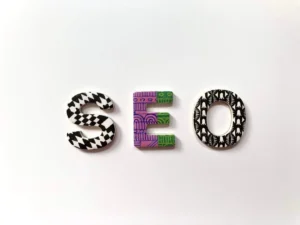“What’s the most effective on-page SEO technique you’ve implemented that isn’t commonly discussed? How did it improve your search rankings and what tip would you offer to others?”
Here is what 8 thought leaders had to say.
Optimize Internal Links For SEO Success
One of the most effective and often overlooked on-page SEO techniques I’ve used was optimizing internal anchor text with intent. Most people focus on keyword usage in content or meta descriptions, but internal links, how you phrase them and where they point, can quietly shape how Google understands your site’s structure and topic relevance. I worked on a content-heavy site where blog posts were floating like islands. We went in and rewrote anchor texts to be descriptive, matched them to target pages’ keywords, and added them naturally within paragraphs instead of in generic “click here” footers.
Within a month, we saw a 22% lift in organic traffic to cornerstone pages we had linked to, and several blog posts that used to rank around page 3 jumped to the bottom of page 1. The best part? It didn’t require new content or major redesigns. My tip: treat internal links like mini search engine signals. Be specific, be intentional, and avoid overusing the exact same phrase across the site. It tells search engines and users that your content is thoughtful and connected.

Marketing & PR Coordinator, Web Search Optimisation
Use Semantic Bridges For Better Interlinking
The most effective on-page SEO technique we’ve implemented that rarely gets discussed is what I call “interlinking clusters with semantic bridges.” Most SEOs understand basic interlinking, but we’ve taken it further by creating strategic content clusters with semantically related transition paragraphs between linked articles.
For example, when linking from a page about website design to another about conversion optimization, we don’t just drop a hyperlink. We craft a natural transition paragraph that uses semantic variations of keywords from both topics, effectively telling search engines that these pages are meaningfully connected, not just randomly linked.
This approach improved our search rankings dramatically for a real estate client, boosting their topical authority scores and pushing several key pages from page two to page one positions. For specific location-based searches, we saw rank improvements of 6-12 positions within just two months.
My tip for others: Go beyond basic interlinking by mapping your content’s semantic relationships first. Create a visual web showing how topics connect, then craft transition paragraphs that use natural language to bridge these concepts. Don’t just link pages—build coherent pathways that both users and search engines can follow logically. This creates a contextual depth that simple hyperlinking can’t achieve, and search engines are increasingly rewarding this type of sophisticated content structure.

Founder and CEO, Origin Web Studios
Target Zero Volume Keywords For SEO Gains
The most effective, yet often undiscussed, on-page SEO technique I leverage is crafting “helpful content” targeting zero search volume keywords with high demand relevancy. We tend to focus on volume, but the real gold lies in those specific, often unrecorded questions your ideal customers ask when they’re genuinely in need. If you analyze the customer journey and anticipate these granular queries through research beyond typical keyword tools, you can create genuinely helpful, in-depth content that directly answers them using their exact language.
The impact on rankings is significant. Offering the most relevant answer to a specific need draws a highly qualified audience, and search engines really acknowledge this value, frequently rewarding the page with enhanced rankings for related, broader terms.

SEO Consultant, Affan Ghori SEO
Boost SEO With LSI Variations Early On
One highly effective but rarely discussed on-page SEO technique I’ve implemented is optimizing sentence-level relevance using latent semantic indexing (LSI) variations within the first 100 words. In addition to targeting the primary keyword, I naturally weave in semantically related terms and user-centric phrases early in the content. This helps search engines better understand context and intent. I’ve seen this improve rankings for competitive terms, especially when combined with structured subheadings and strong internal linking. My tip: analyze top-ranking pages for related phrases, then mirror that relevance in a natural, reader-first way to boost both SEO and readability.

Founder, Twibi
Add Relatable Proof Blocks To Engage Readers
One trick that’s worked surprisingly well? Adding “relatable proof” blocks to pages—quick blurbs that show we understand the reader’s problem without overselling. Not testimonials. Not case studies. Just short lines like “Law firms come to us after spending thousands on ads with no return.” That kind of line holds attention. It makes people think, “Okay, they get it.”
After testing it on a few pages, bounce rates dropped and session time went up. Google liked that. Rankings followed—sometimes faster than expected. If you’re writing content, stop trying to sound perfect. Show readers you’ve been where they are. Be specific. That connection keeps them reading—and that’s what moves the needle.

UGC manager/Marketing manager, Rathly
Align Internal Links With User Queries
One highly effective but underutilized on-page SEO technique I’ve implemented is intent-aligned internal linking with contextual anchor text that mirrors user queries. Instead of just linking generic keywords like ‘read more’ or ‘click here,’ I strategically link to related content using anchor text that reflects long-tail search phrases or questions users are already searching for. This not only improves crawlability and user engagement but also helps distribute topical relevance across the site. After applying this across a content cluster for a client in the wellness space, we saw a 42% increase in time-on-site, and multiple blog posts jumped to page one for mid-tail keywords within 30 days.
My tip: Map your internal links to real user queries. Google sees the connections, and your users stay longer because they’re finding what they came for.

Content Writer, PWA Media
Embed Interactive Content To Increase Dwell Time
One under-the-radar on-page SEO technique I’ve found incredibly effective is optimizing for user dwell time by embedding interactive micro-content, like quizzes or calculators, directly on key pages. Instead of just tweaking meta tags or keyword density, I focus on keeping visitors engaged longer, signaling to Google that the page delivers value.
How It Worked: On my wellness site, I added a 5-question quiz on a retreat guide page titled “Which Retreat Style Fits Your Vibe?”—think yoga, shamanic, or meditation. It took users 2-3 minutes to complete, with results linking to tailored retreat listings. I built it using a free Typeform embed, ensuring it was mobile-friendly and loaded fast. I also wove in subtle keywords like “best ayahuasca retreat” in the quiz prompts and results, keeping it natural. The idea came from watching users linger on interactive X posts longer than static ones.
Impact on Rankings: Dwell time on that page jumped from 1.5 to 4 minutes, per Google Analytics. Bounce rate dropped from 55% to 40%. Within three months, the page climbed from page two to top 5 for “retreat finder” and related long-tail terms, driving a 25% traffic boost. Click-throughs to booking pages rose 15%, tying directly to revenue. Google clearly rewarded the engagement, as the page’s Core Web Vitals stayed green, avoiding speed penalties.
Why It’s Effective: Dwell time is a user behavior metric Google uses to gauge content quality. Interactive elements hook visitors, especially on mobile, where 60% of my traffic lives. Unlike common tactics like schema markup, this directly influences how users interact with your page, not just how bots read it.
My Tip: Pick one high-value page and add a simple interactive element—a quiz, cost calculator, or checklist—relevant to your audience. Use free tools like Typeform or Outgrow, and keep it under 5 minutes to complete. Test for 30 days, track dwell time and rankings in Google Analytics, and tweak questions or CTAs based on what keeps users longest. Ensure it’s lightweight to avoid slowing your site.

Managing Director, Best Retreats
Use Semantic Clustering For Higher Rankings
One lesser-known on-page SEO technique I’ve found surprisingly effective, especially for Kalam Kagaz’s service pages, is semantic clustering within internal content blocks. Instead of simply inserting keywords, we craft mini thematic clusters around each core keyword using related phrases, FAQs, and long-tail variations—all naturally embedded within subheadings and answer formats.
For example, on our SOP writing page, we didn’t just use “SOP writers” but expanded with semantically related phrases like “statement of purpose help for graduate schools,” “personal statement tips,” and “how to write an impactful SOP.” These clusters make the page more contextually rich, helping Google understand the breadth of our expertise.
The result? Higher rankings for multiple keyword variants, lower bounce rates, and increased dwell time.
My tip is to use tools like Google’s “People Also Ask,” AnswerThePublic, or even ChatGPT to build semantic subtopics and organically place them within your page. It boosts topical authority and user experience.

 Kritika Kanodia
Kritika Kanodia


